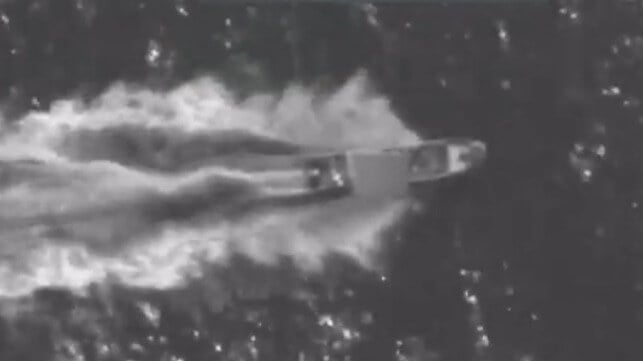Video: U.S. Kills Three as Attacks on Pacific Drug Smuggling Expand

Hours after revealing the United States has expanded its lethal strikes to stop drug smuggling to the Pacific, a second strike was reported. It is seen as an escalation of the efforts that had previously highlighted the interdictions of boats with the arrest and seizure of the narcotics.
The second strike in the Eastern Pacific was announced by Pete Hegseth in a social media posting. He said three individuals were killed in the strike, which took place in international waters. Like the previous attack, the U.S. did not associate the boat with any specific country but instead said it was transiting along “a known narco-traffic route.”
In addition to the footage of the boat exploding and burning in the aftermath, the video includes scenes of apparent bales floating in the ocean. Critics have pointed out that the U.S. has not, in the past, confirmed the presence of drugs on the boats nor revealed the amount of narcotics that are being destroyed in these attacks.
Today, at the direction of President Trump, the Department of War carried out yet another lethal kinetic strike on a vessel operated by a Designated Terrorist Organization (DTO). Yet again, the now-deceased terrorists were engaged in narco-trafficking in the Eastern Pacific.
— Secretary of War Pete Hegseth (@SecWar) October 23, 2025
The… pic.twitter.com/PEaKmakivD
“These strikes will continue, day after day. These are not simply drug runners – there are narco-terrorists,” writes Hegseth, continuing to use the administration's elevated language. Labeling them as terrorists is seen as a justification for the use of lethal force. “We will find them and kill them, until the threat to the American people is extinguished,” vows Herseth.
The administration previously acknowledged seven strikes in the Caribbean, having started in early September and continuing through last week. It reported killing 32 people, with only two known survivors of the attacks. The first reported strike in the Pacific killed two people.
The White House and Hegseth have asserted that the targeting is taking place through the use of intelligence and is focusing on known drug smuggling routes. The Navy and Coast Guard have also increased their presence in both the Caribbean and Eastern Pacific to support the increased efforts are interdiction.
